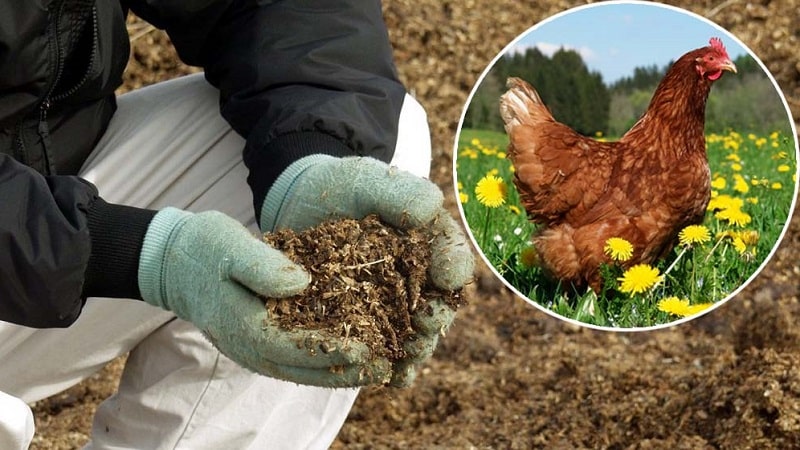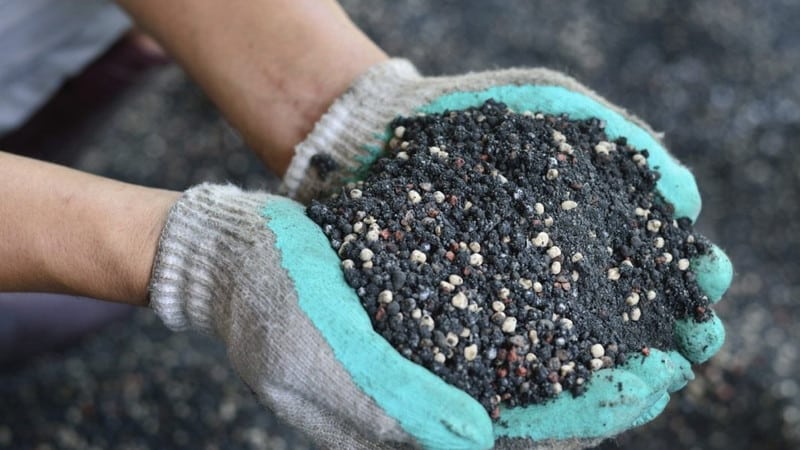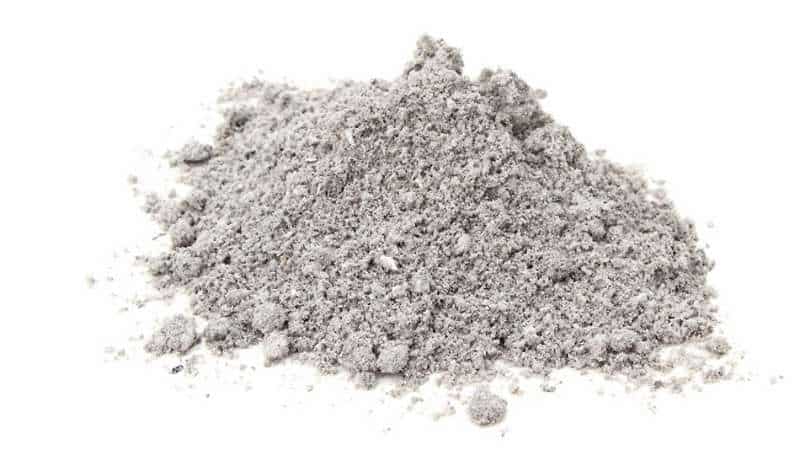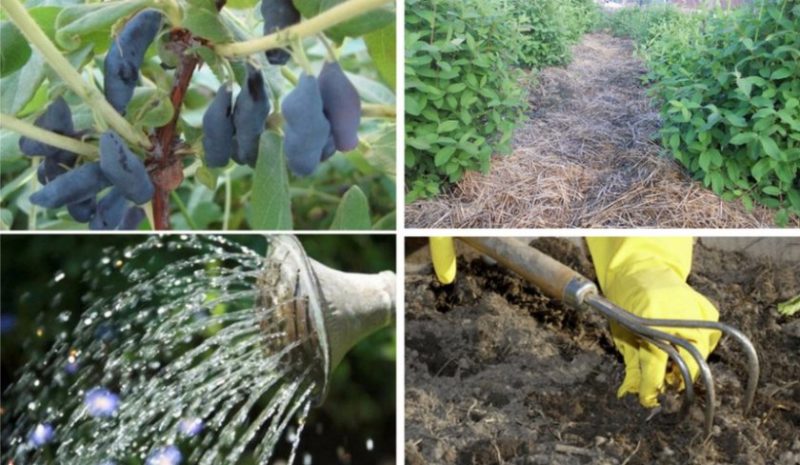How to properly care for honeysuckle in spring - feeding and pruning
Honeysuckle is one of the most unpretentious plants in the garden. It can withstand severe frosts, excess moisture and pest attacks. Lack of nutrients and lack of care negatively affect the yield, size and taste of the fruit. This can be easily corrected by carrying out simple measures in the spring: fertilizing, watering and pruning. How to do this correctly and not cause harm, read the article.
When to feed honeysuckle

Gardeners begin their first spring work as soon as the snow melts. The honeysuckle tree trunk is loosened shallowly to ensure oxygen access to the root system. Before the kidneys swell, sanitary pruning and the first feeding. The second time, fertilizers are applied before flowering, the next time - in July. In the gardener's autumn calendar - the last feeding after leaf fall.
Honeysuckle is a frost-resistant plant, so it wakes up early. Already at a temperature of +3°C the growing season begins, the bush blooms at +10°C. They are guided by weather conditions so as not to miss the deadlines for applying fertilizers and pruning.
Types of fertilizers
Honeysuckle is fed with organic or mineral preparations. Herbal infusions are prepared for her. These types of fertilizers are applied at the root of the bush. Special fertilizers and protective agents are used for the above-ground parts of plants. from diseases and pests.
Organic fertilizers

Peat, chicken droppings and mullein are considered the best organic fertilizers for honeysuckle. Rotted compost provides a variety of nutrition, but is dangerous due to the penetration of pathogenic microorganisms and pests into the soil.
Important! The organic matter is sprinkled with a 3-5 cm layer of soil to ensure good reheating.
Mineral supplements

For the full formation of ovaries and abundant fruiting, nitrogen, potassium, and phosphorus fertilizers are applied to honeysuckle. The use of special complex additives makes the gardener’s work easier, but is not always justified. For example, soil rich in nitrogen, when such fertilizers are applied, will receive an excess of this element, which will cause slower plant growth, stretching, thinning of leaves, and loss of chlorophyll.
Important! Before applying fertilizers and immediately after, the honeysuckle is watered abundantly to ensure the dissolution of the drugs and their delivery to the roots.
Folk remedies

The shrub responds well to the application of wood ash in early spring. This feeding provides the plant with iron, potassium, phosphorus, and magnesium. The main purpose of ash is protection from pests and diseases.
Potato decoction speeds up the growing season if you apply it under the bushes for 7-10 days immediately after the snow melts in an amount of 3-5 liters.
An infusion of spring herbs performed well:
- wormwood;
- mustard;
- clover;
- dandelion
The chopped greens are poured with hot water, left for 10-12 hours and watered over the honeysuckle.
Foliar feeding
This method of providing supplemental nutrition should be used with caution. If there is an overdose of mineral or organic fertilizers, the delicate foliage will get burned and the plant will not produce good ovaries.Therefore, to treat the above-ground part, the fertilizer is diluted with water 2 times more than for the root part.
Read also:
Feeding honeysuckle in spring for a good harvest
This plant is unpretentious, but for a good harvest and protection from diseases it needs regular feeding. Most cultivated varieties are responsive to the application of organic and mineral fertilizers. The result can be assessed by the formation of ovaries and the abundance of fruits.
Before flowering
Immediately after loosening in early spring, the tree trunk circle is mulched with peat or compost. Thanks to the spring rains, the plant will receive adequate nutrition from them for the root system located close to the surface of the earth. The same organic matter will feed the bushes during the period of bud opening.
Manure is added before flowering. It is best to use chicken manure, previously diluted with water in a ratio of 1:5 and infused for 2-3 days.
Rotted mullein is used only from last year. Fresh will “burn” the roots and shoots. Cow dung is diluted in a ratio of 1:6 and left for 3 days.
Important! Organic fertilizers are applied once every two years.
The plant requires mineral fertilizing twice during the growing season - in early spring and after harvesting. Honeysuckle needs nitrogen, phosphorus or potassium fertilizers, which are applied immediately after the snow melts along with or instead of organic matter.
How to feed honeysuckle in spring:
- phosphorus fertilizers – 10 g per 1 m²;
- potassium – 15 g per 1 m²;
- ammonium nitrate - 30 g for each bush;
- urea – 20 g per plant.
Complex mineral fertilizers are applied in accordance with the instructions on the packaging.
During flowering
During this period, the plant does not require additional feeding, since it has accumulated a sufficient supply of nutrients. On the contrary, during the blooming of buds there is a risk of harm by introducing mineral or organic fertilizers.
After flowering
During the period between the opening of the buds and the formation of the ovaries, no honeysuckle fertilizer is needed. Excessive intervention will prevent the plant from fully bearing fruit, so limit yourself to watering only as needed.
How to fertilize honeysuckle in summer
The harvest ends early. Already at the end of June - beginning of July, the plant produces its last berries and begins to prepare for the next season. Mineral fertilizers are used to feed honeysuckle in summer. They are introduced in mid-July.

During fruiting
Fertilizers should not be applied during the ripening period of berries. This will affect the taste and reduce the benefits of the fruit.
After harvest
Additional nutrition is applied under the honeysuckle bushes after harvesting the berries. During this period, the shrub lays buds for the next growing season and needs nitrogen, potassium, phosphorus or complex mineral supplements.
It is best to water the plants once with a solution of nitroammophoska, prepared at the rate of 30 g of fertilizer per 10 liters of water.
Important! At the end of the growing season, honeysuckle is weakened, so it requires additional nutrition.
How to fertilize in the fall
Before the onset of cold weather, honeysuckle is fed with organic matter mixed with soil. Mineral fertilizers are not applied, because sap flow is already completed and nutrients will not be absorbed.
Trimming and watering honeysuckle after feeding

The formation of the plant crown begins no earlier than the third year of life.Before this age, only broken and dead branches are removed.
The process of pruning an adult plant takes place in two stages:
- At the first stage, all shoots are cut to a height of 35-40 cm from the soil level.
- The next year, the crown is formed, removing excess branches to prevent thickening.
To rejuvenate an adult bush, remove all the lower branches spreading along the ground. Then dry shoots and those with few leaves are cut out. At the last stage, honeysuckle is shaped into a ball or pyramid.
All types of pruning are carried out in early spring, before the buds emerge, but after the onset of above-zero temperatures. The cuts are treated with garden varnish to prevent the penetration of painful microflora and pests into the wood.
Important! The plant lays buds not only on adult branches, but also on the tops of young ones, so one-year-old shoots are pruned only when necessary to thicken the crown.
Honeysuckle is a moisture-loving plant, especially during flowering and fruiting.. In spring, the shrub is watered as needed, preventing the soil from drying out. During flowering and fruiting, increase the volume of water - the soil must be constantly moist. Lack of moisture leads to a decrease in yield and deterioration in the taste of berries.
In summer, watering is reduced and increased again in autumn. The soil is periodically loosened so that a crust does not form, preventing the penetration of air to the roots. Mulching with straw or other organic matter retains moisture well and prevents drying out.
Conclusion
Minimum care and pruning honeysuckle in the spring will result in a rich harvest of tasty and healthy berries. Mandatory measures - fertilizing, watering, pruning - will not take much time, but will ensure full development of the plant.In addition, honeysuckle awakens very early, when there is little other spring work in the garden.